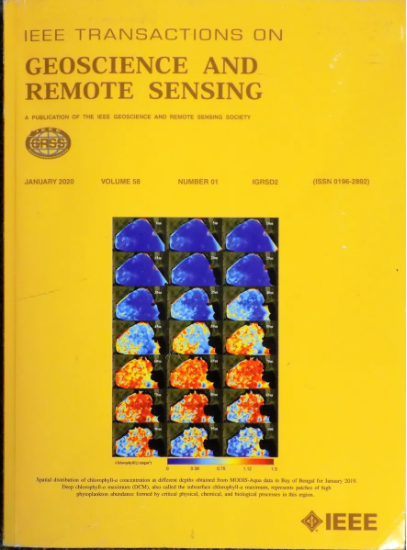基于Landsat地表温度数据和随机森林的综合地面验证网络多尺度空间代表性评价
IF 8.6
1区 地球科学
Q1 ENGINEERING, ELECTRICAL & ELECTRONIC
IEEE Transactions on Geoscience and Remote Sensing
Pub Date : 2025-03-16
DOI:10.1109/TGRS.2025.3570685
引用次数: 0
摘要
地表温度(LST)产品在广泛应用前需要经过严格的验证,而地面验证点的空间代表性对验证结果的可靠性起着至关重要的作用。因此,准确评估地面站点的空间代表性对于可靠的验证结果至关重要。然而,现有的研究往往侧重于有限区域观测网内的少数站点,并且通常在单一空间尺度上评估代表性。为了解决这些局限性,本研究对全球5个观测网络的211个站点进行了综合评估。为了估计典型LST产品(1、3、5和10 km)对应的多个空间尺度上的代表性,提出了一种新的空间代表性评价模型。该模型利用长期Landsat LST数据和随机森林(RF)方法,量化了空间代表性误差(SRE)与空间尺度之间的关系,实现了对每个站点的无缝空间代表性评估。基于该框架,24个在所有尺度和季节中表现出一致的高代表性的站点被确定为最佳验证站点。此外,本研究提出了两种选址策略:一种是优先考虑时间稳定性,确定了44个在所有季节都具有代表性的站点;另一种是强调空间覆盖,选择了38个在不同尺度上具有代表性的站点。这些发现为未来的LST产品验证工作提供了有价值的指导和参考。本文章由计算机程序翻译,如有差异,请以英文原文为准。
Evaluating Spatial Representativeness Across Multiple Scales for a Comprehensive Ground Validation Network Using Landsat Land Surface Temperature Data and Random Forest
Land surface temperature (LST) products require rigorous validation before widespread application, and the spatial representativeness of ground validation sites plays a critical role in ensuring the reliability of validation results. Therefore, accurately assessing the spatial representativeness of ground sites is essential for credible validation outcomes. However, existing studies often focus on a small number of sites within confined regional observation networks and generally evaluate representativeness at a single spatial scale. To address these limitations, this study conducts a comprehensive evaluation of 211 sites from five observation networks globally. To estimate representativeness across multiple spatial scales corresponding to typical LST products (i.e., 1, 3, 5, and 10 km), a novel spatial representativeness assessment model is proposed. This model, leveraging long-term Landsat LST data and the random forest (RF) method, quantifies the relationship between spatial representativeness error (SRE) and spatial scale, enabling seamless spatial representativeness evaluations for each site. Based on this framework, 24 sites that demonstrate consistently high representativeness across all scales and seasons are identified as optimal validation sites. Furthermore, this study proposes two site selection strategies: one prioritizing temporal stability, which identifies 44 sites ensuring representativeness across all seasons, and the other emphasizing spatial coverage, which selects 38 sites to guarantee representativeness at different scales. These findings provide valuable guidance and references for future LST product validation efforts.
求助全文
通过发布文献求助,成功后即可免费获取论文全文。
去求助
来源期刊

IEEE Transactions on Geoscience and Remote Sensing
工程技术-地球化学与地球物理
CiteScore
11.50
自引率
28.00%
发文量
1912
审稿时长
4.0 months
期刊介绍:
IEEE Transactions on Geoscience and Remote Sensing (TGRS) is a monthly publication that focuses on the theory, concepts, and techniques of science and engineering as applied to sensing the land, oceans, atmosphere, and space; and the processing, interpretation, and dissemination of this information.
 求助内容:
求助内容: 应助结果提醒方式:
应助结果提醒方式:


